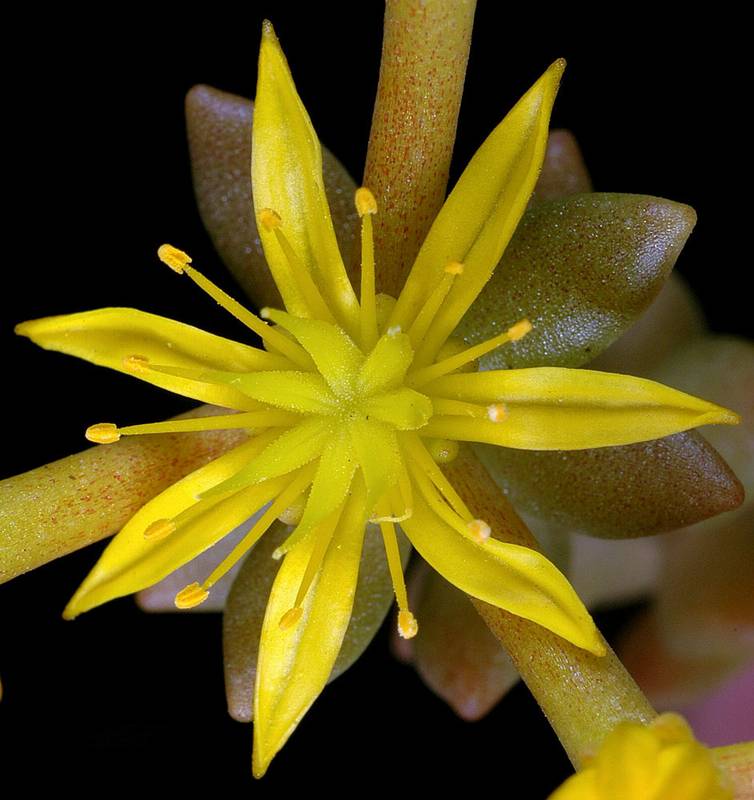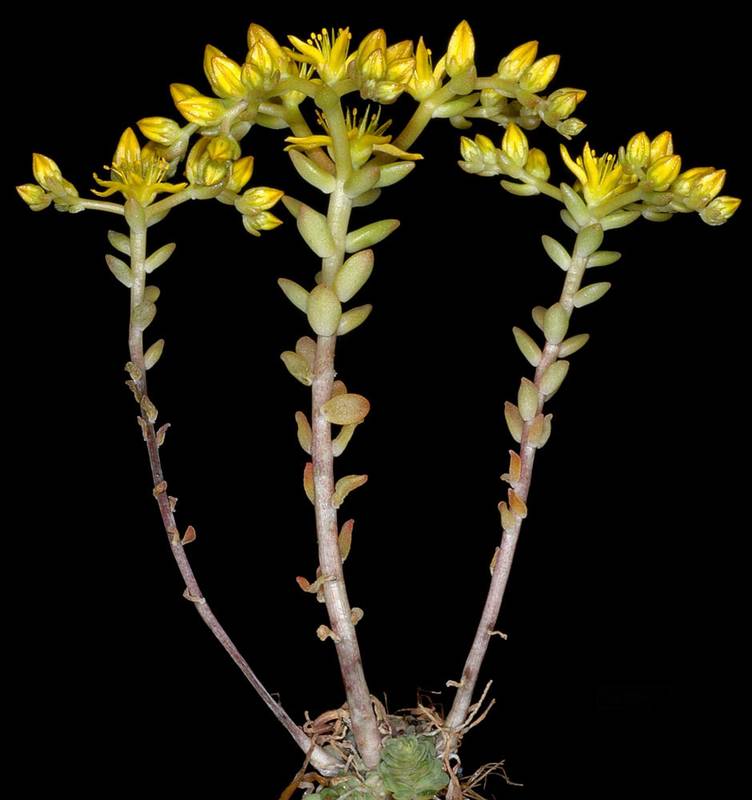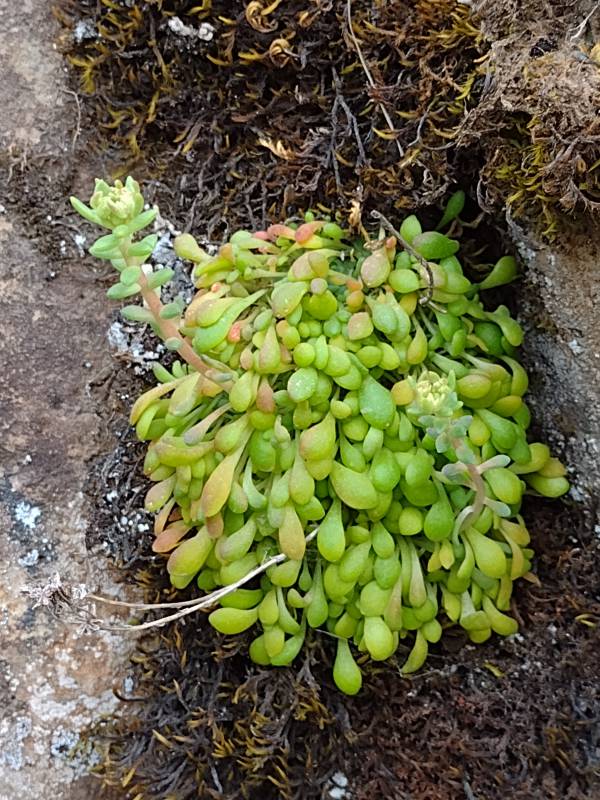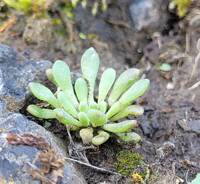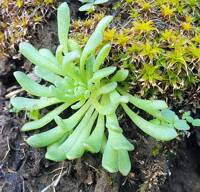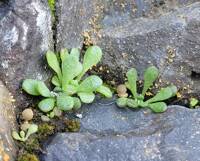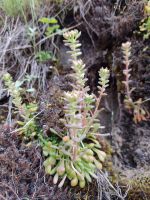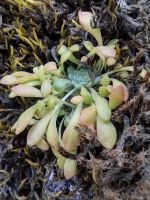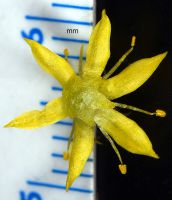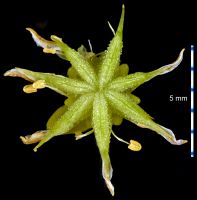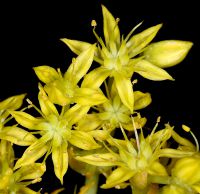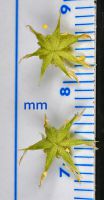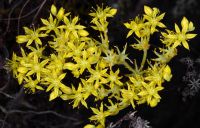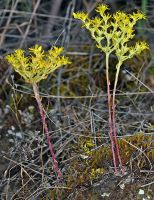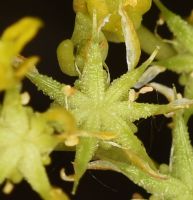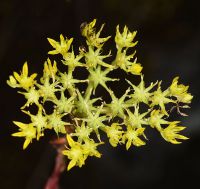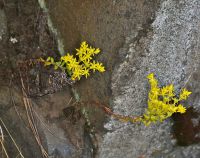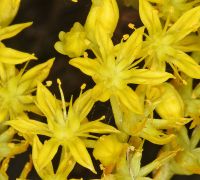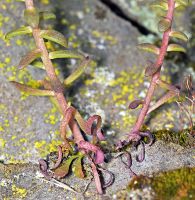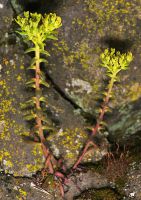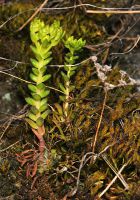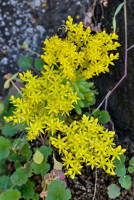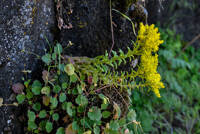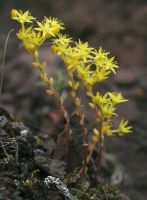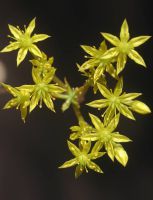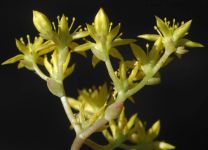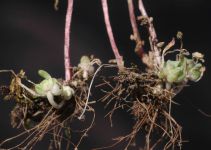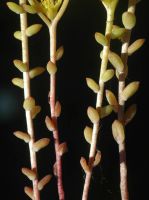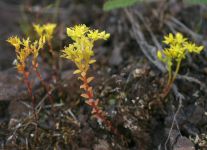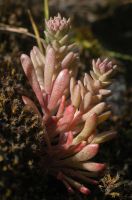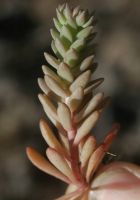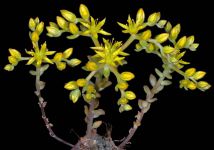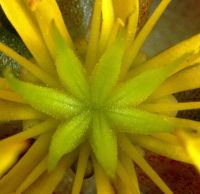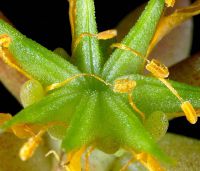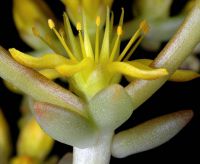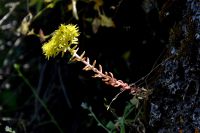Distribution: Occurring east of the Cascades crest in Washington; Washington to Oregon, east to Montana.
Habitat: Mossy rocks to open, gravelly hillsides, chiefly in canyons.
Flowers: April-July
Origin: Native
Growth Duration: Perennial
Conservation Status: Not of concern
Pollination: Bees, flies
Weak perennial from short, slender rhizomes, the few, simple flowering stems upright, 7-12 cm. tall, with few sterile branches.
Basal leaves crowded is rosettes, oval, some less than 5 mm. long, rice-like in appearance, others more elongate and spatulate, covered with short projections; cauline leaves near the base narrowly spatulate-oblanceolate, up to 25 mm. long, reduced upward to obovate and 6 mm. long.
Flowers numerous in several-rayed, spreading cymes, sessile; sepals 5, triangular to lance-ovate, 1-1.5 mm. long; petals 5, distinct, narrowly elliptic-lanceolate, acuminate, 5-8 mm. long; stamens 10, shorter than the petals; pistils 5.
Follicles 5, widely spreading, basally united for 1 mm., covered with glandular projections.
Flowers with more than 5 follicles, as shown in the photos, are rare.
Publication: N. Amer. Fl. 22: 73. 1905.
Sedum divaricatum S. Watson
PNW Herbaria: Specimen records of Sedum leibergii in the Consortium of Pacific Northwest Herbaria database
WA Flora Checklist: Sedum leibergii checklist entry
OregonFlora: Sedum leibergii information
E-Flora BC: Sedum leibergii atlas page
CalPhotos: Sedum leibergii photos

